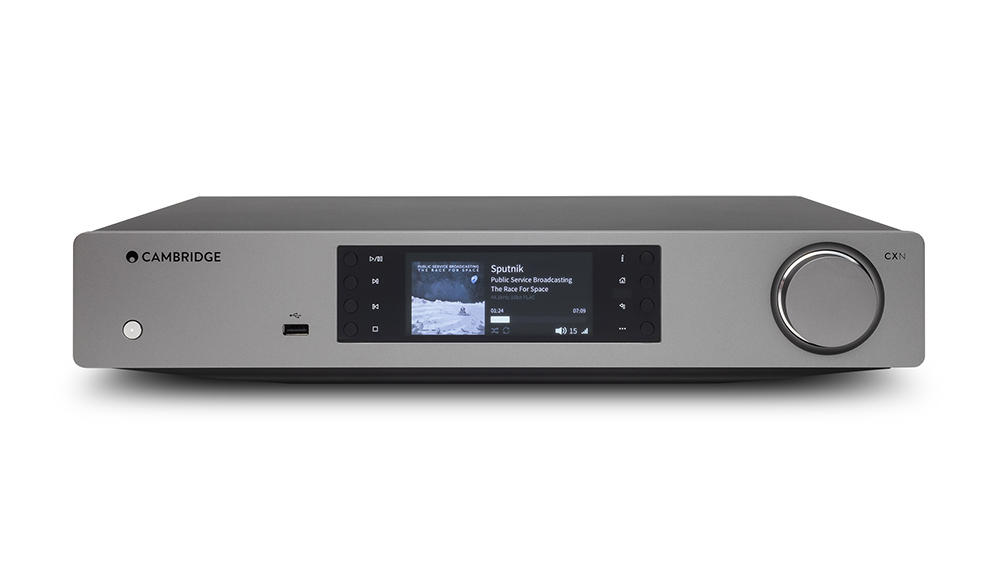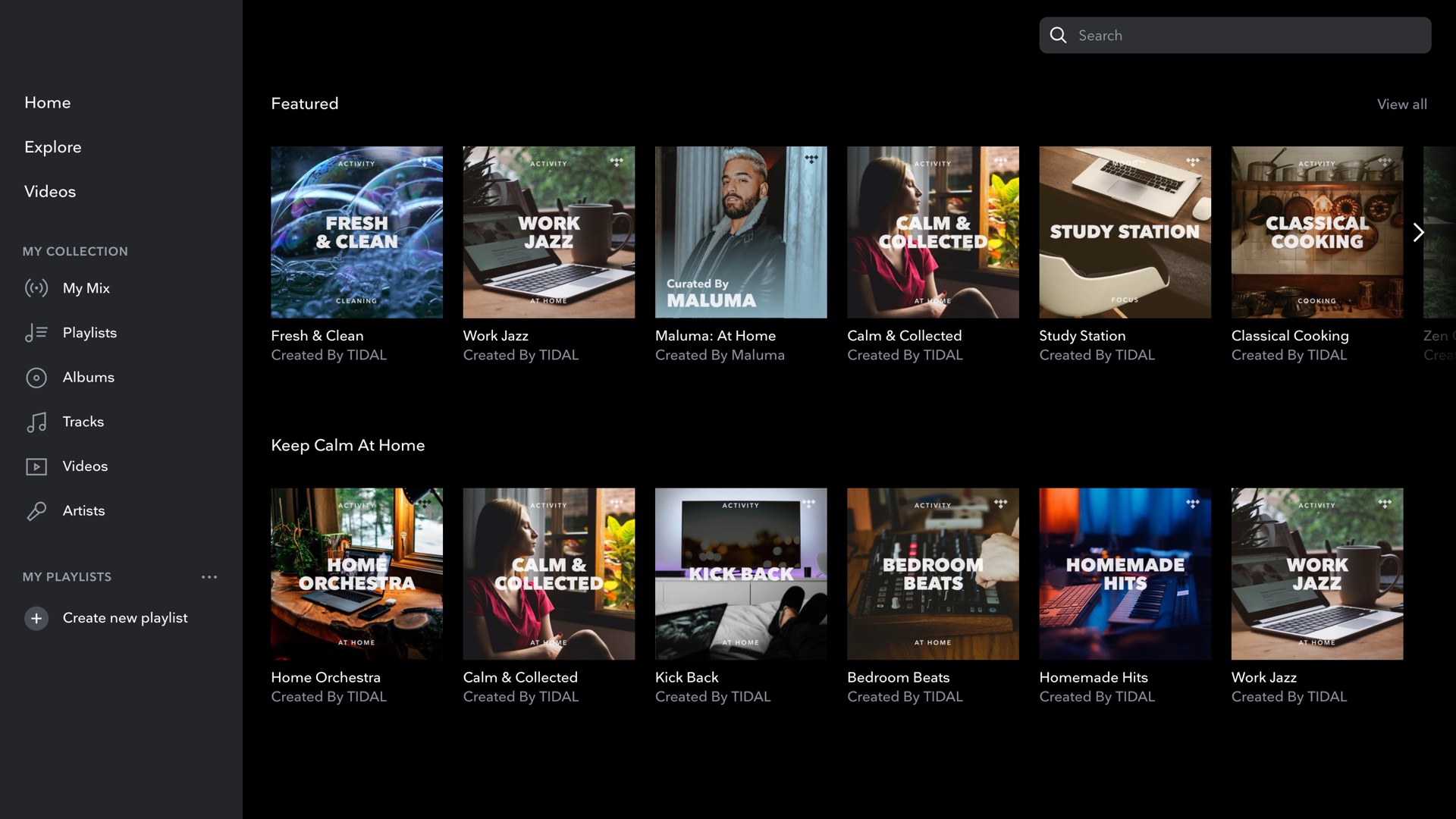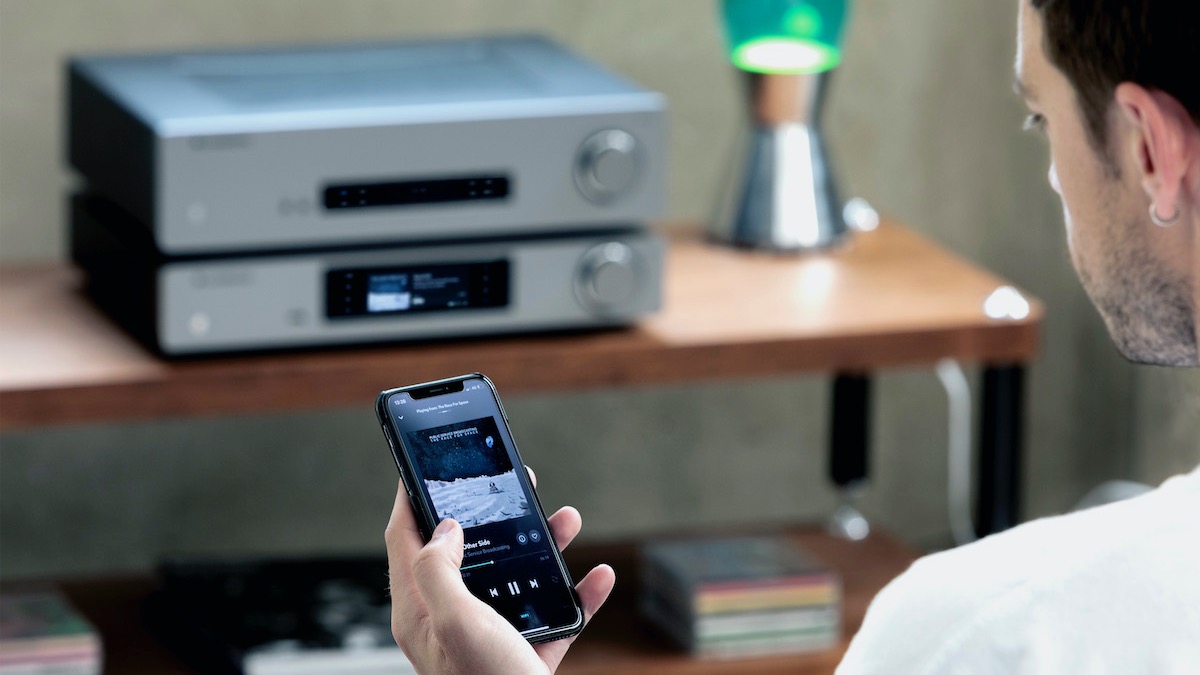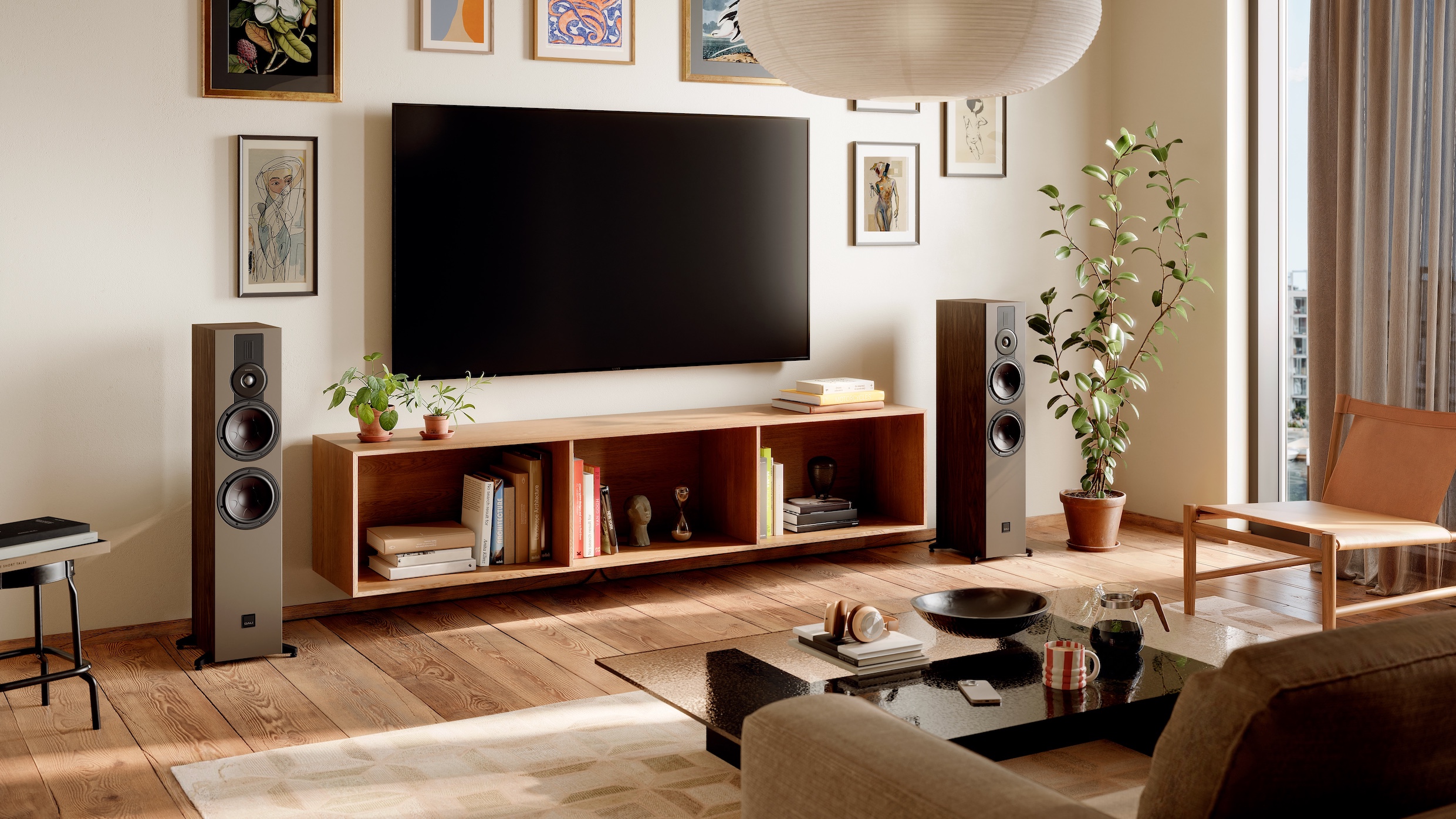Adding a music streamer to my hi-fi system has been a revelation (and a frustration)
It has transformed my music listening at home, but hi-fi streaming isn't without its irritations

At the beginning of March 2020, just weeks before the first national UK lockdown and when all seemed relatively hunky-dory in this part of the world, I shuffled around my hi-fi system to accommodate a music streamer for the first time.
I'd been toying with the idea for some time – not least as, through reviewing for What Hi-Fi?, I was aware that the hi-fi streaming experience was only getting better and better – but I'd spent time and money on a decent-sounding system and decent-sounding collection of music, and I hadn't been in a rush to 'downgrade' my listening at home. For me, streaming until then had been (and still is) excellent for listening to music on the move – if only because you can't exactly take vinyl on the bus, natch! – but it seemed like the time to give it a proper chance in my home hi-fi system.
As it turns out, the retrospectively well-timed arrival of the wonderful Cambridge Audio CXN V2 has been a welcome piece of audio furniture in my system in the past ten months – and, while not without its frustrations, more transformative to my music listening than I’d ever imagined.
The CXN V2 came into my household as a third pet might, occupying third rank in my system’s sources (behind the Audio Technica AT-LP5 turntable and Marantz SA-KI Pearl Lite CD player) but instantly getting the most attention. As new things often do.
Initial expectations were that a streamer would come in handy for briefer listening sessions, or even background music listening during all those gatherings I’d (fruitlessly) planned – but now the Marantz hasn’t been plugged in for months and my CD pile is collecting dust, battling against free space (ah, free space) to keep its place in my two-bedroom London flat.
That may not be their eventual fate, but I quickly found that the alluring tactility of physical formats was satisfyingly covered by the record player and my ever-growing vinyl collection (compared to my stagnant CD collection), and being able to adequately listen to more new music than ever before through my hi-fi speakers – as opposed to only through my wireless headphones, via my phone – was a desirable novelty. By the summer I’d realised that the goalposts that framed my listening habits had somewhat moved; streaming had become more than just a novelty.

Now, the CXN V2 sounds great – better than any of its kind and price we’ve heard, it’s a class-leader, as all multi-What Hi-Fi?-Award winners are. I knew this; I’d heard the CXN V2 in action countless times in the What Hi-Fi? test room. Living with it for a good spell confirmed that it’s also very convenient to use – while it has a dedicated control app, it, like most out there, has its moments, so I found using the Tidal and Spotify apps (via Google Chromecast and Spotify Connect respectively) more reliable and as much of a go-to. The speed and convenience of just picking up a phone and prodding at the screen a few times, as opposed to leaving the sofa to load up a CD and invariably spend ten seconds looking for the misplaced remote, instantly felt like a welcome novelty and, several months down the line, it had well and truly won me over. I was sold. I still am.
The latest hi-fi, home cinema and tech news, reviews, buying advice and deals, direct to your inbox.
But for all the convenience and increasing quality offered by streaming hardware and software, I’ve come to realise the hard way that music streaming isn’t without its frustrations. Yes, adding a streamer to your system is all it's cracked up to be – but there are still a fair few bumps in the road. It's a box-ticking exercise and can be a waiting game.
Due to new audio formats and streaming technologies emerging onto the scene semi-regularly, the list of things you should consider when in the market for a music streamer is only getting longer. Does it have support for the streaming service you subscribe to – Spotify, Apple Music, Qobuz, Tidal, Amazon Music etc? Does it have Bluetooth, to stand in when your network’s down? Does it have inputs you can plug other sources into, if you need them? Nowadays, it nearly always will have (although of course it's best to triple check). But does it support the technologies used within the streaming services? That’s another question entirely.
For example, I’m a Tidal HiFi subscriber and therefore have access to the service’s hi-res Tidal Masters tracks – but the CXN V2 doesn’t support them. Because it can’t decode the MQA technology that powers them. There’s a workaround in this instance – you can play Tidal Masters natively on the Tidal desktop app on your laptop, connected to the Cambridge via USB – but that’s not all that convenient now, is it?
To some extent that diminishes the biggest benefit of subscribing to Tidal’s higher-res music tier. Because does my Marantz sound better with a physical CD than the Cambridge does playing CD- or lower-quality tracks? Yes it does. Cambridge isn’t alone in not supporting MQA, and we understand there are reasons for that, but it does hit home the fact that streaming isn’t quite the level playing field we’d probably all like it to be.

As with a lot of streaming brands’ hardware, there’s been an understandable-yet-nevertheless-frustrating wait for new features like Tidal Connect to be rolled out via a firmware update, too. We all want new features as soon as they’re announced, but that doesn’t always fly in the hi-fi streaming world of course. The recent controversy around Sonos’ having defunct some of its older products serves as an uneasy reminder that there’s a limit to how much streaming products can be future-proofed in this fast-developing environment.
New technologies that come in, such as MQA or Dolby Atmos Music, can’t always be implemented into old products due to hardware requirements. It’s why an upgrade path, such as the one offered by the What Hi-Fi? Award-winning NAD C 658, is potentially a good idea. On the flip side, it’s comforting to know that, months or even yours after you’ve bought your streamer, it can be blessed with some new features and services simply through firmware updates – and for free, too.
Then there’s the accessibility of streamed music, which you wouldn’t think would be an issue considering one of streaming’s biggest advantages over other forms of music consumption is its availability of tens of millions of tracks – which, really, only the world’s most committed of collectors would perhaps have at their fingertips through CDs or vinyl alone. You pay between, say, £120 ($120) and £240 ($240) per year (depending on what sound quality you opt for) for unlimited access to a streaming service’s catalogue, but you don’t own any of it – not like you physically do with a CD or vinyl – and due to fluctuating rights they can disappear without a moment’s notice. One day you simply find a track on your playlist is no longer playable on that service – it’s greyed out and by all means dead to you, no matter how many times you stab your finger over it in infuriation – and it feels as though you've been a victim of daylight robbery. Which of course you haven’t been, because it was never actually yours in the first place.
Purchasing digital music to download, store on a hard-drive and stream through your streamer gets round that issue of ownership, of course – and for those who can afford to build a digital library that way (and/or by ripping their own CDs to a NAS drive), that’s the most reliable way to stream.

Streaming’s battle royale (that is, the battle of artist royalties) is another heated concern that continues to face the music industry, as is the issue (or at least the pity) of the music listening ‘experience’ becoming an increasingly lost art. There’s no booklet to peruse, no lyrics to finger your way through. There may even be adverts interrupting album plays, if you subscribe to a free, ad-supported service tier, and, while controlling music on your phone is generally convenient, we all know the (unreasonable?) frustration that comes from an app crashing or your phone taking a while to wake up – "all I want to do is skip a track, why is it taking seconds more than it should?!" The streaming ‘experience’ is something classical music service Primephonic is addressing by enhancing its catalogue with digital CD booklets, but it’s not something the majority of music streamers will be privy to.
Ultimately, I use the Cambridge CXN V2 so much now that I can’t imagine living with a hi-fi system devoid of a music streamer. By nature, and like many of its kind, it offers a way to easily and comprehensively stream a world of music – of your own or that from a music service – that, due to cost or storage or both, might not otherwise be available.
Music streaming, and consequently music streamers, is not a perfect method of music consumption, but as an overall concept it’s hard to fight and, when it has its claws into your music-yearning soul, even harder to give up. It’s little wonder streaming and hi-fi has now merged into what is arguably the pinnacle of quality, convenient music listening: all-in-one active stereo speakers. Perhaps that’s what’s next for me...
MORE:
February issue of What Hi-Fi? on sale now!
The best of CES 2021: 9 product and technology highlights
That Was Then... Marantz CD-7: revisiting the firm's last flagship disc spinner

Becky is a hi-fi, AV and technology journalist, formerly the Managing Editor at What Hi-Fi? and Editor of Australian Hi-Fi and Audio Esoterica magazines. With over twelve years of journalism experience in the hi-fi industry, she has reviewed all manner of audio gear, from budget amplifiers to high-end speakers, and particularly specialises in headphones and head-fi devices.
In her spare time, Becky can often be found running, watching Liverpool FC and horror movies, and hunting for gluten-free cake.
